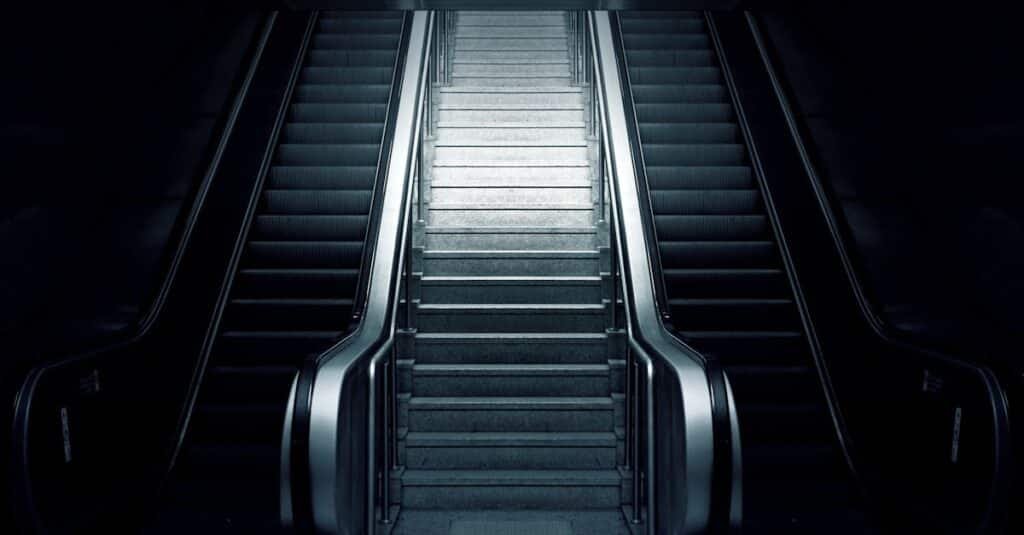Why You Shouldn’t Walk on Escalators: A Cautionary Tale
Escalators are a marvel of modern engineering, designed to effortlessly transport us from one floor to another. Yet, for many, they’ve become a stage for impatience—a place where the slow stand to the right, and the hurried dash up the left. But what if I told you that walking on escalators is not just a bad habit, but a dangerous one? Let me paint you a picture of why you should resist the urge to rush, with dramatic examples that might just change your mind.
The Domino Effect of Disaster
Imagine this: It’s a busy Monday morning at a bustling subway station. The escalator is packed with commuters, some standing, others walking briskly to catch their train. A man in a suit decides to sprint up the left side, his briefcase swinging wildly. He loses his balance, tripping over his own feet. In a split second, he crashes into the person in front of him, who stumbles backward, knocking into another. Like a row of falling dominos, bodies tumble, limbs flail, and chaos ensues. By the time the escalator reaches the top, a dozen people are injured, some with broken bones, others with cuts and bruises. All because one person decided to walk.
This isn’t just a hypothetical scenario. In 2015, a similar incident at a London Underground station left 14 people injured, some critically. The cause? A single commuter who lost their footing while walking up the escalator. The lesson? Escalators are not designed for speed. They’re designed for stability. When you walk, you risk not only your safety but the safety of everyone around you.
The Hidden Dangers of Moving Parts
Escalators are intricate machines with countless moving parts—steps that rise and fall, grooves that shift and grind. When you walk, you increase the likelihood of getting your foot caught in one of these gaps. Picture this: A woman in heels steps onto the escalator, determined to make it to her meeting on time. She strides confidently, but her stiletto catches in the gap between the steps. Before she can react, her foot is pulled into the mechanism, crushing her toes and trapping her leg. The escalator grinds to a halt, but the damage is done. She’s rushed to the hospital, where doctors work tirelessly to save her foot.
This isn’t an exaggeration. In 2019, a similar escalator incident in China went viral after a woman’s foot was swallowed by an escalator. The video is haunting—a stark reminder that escalators are not treadmills. They’re machines with teeth, and they don’t discriminate.
The Myth of Time Saved
Let’s be honest: How much time do you really save by walking on an escalator? A few seconds? Maybe a minute? Now, weigh that against the potential consequences. Imagine you’re running late for a job interview. You’re desperate to make up time, so you bolt up the escalator. Halfway up, you slip, landing hard on the metal steps. Your knee is bloodied, your suit is torn, and your confidence is shattered. By the time you limp into the interview, you’re a mess—both physically and mentally. Was those few seconds really worth it?
Studies have shown that walking on escalators saves minimal time, especially during peak hours when the left side is congested. In fact, standing on an escalator is often faster overall, as it reduces the risk of accidents and keeps the flow of traffic steady.
The Ripple Effect of Panic
Now, let’s talk about the psychological impact. When someone falls on an escalator, it doesn’t just affect them—it sends shockwaves through the crowd. Picture this: A child trips while running up the escalator, their small body tumbling backward. The people behind them freeze, unsure whether to help or step aside. Panic sets in as the escalator continues to move, dragging the child closer to the edge. Someone hits the emergency stop button, but not before the child is injured and the crowd is left shaken.
This kind of incident can leave lasting scars, not just on the victim, but on everyone who witnesses it. Escalators are already intimidating for many—especially children, the elderly, and those with mobility issues. When you walk, you contribute to an environment of chaos and fear.
The Simple Solution: Stand Still
The solution to all of this is simple: Stand still. Escalators are designed to do the work for you. By standing, you reduce the risk of accidents, keep the flow of traffic smooth, and create a safer environment for everyone. Think of it as a moment of respite in your busy day—a chance to catch your breath, check your phone, or simply people-watch.
So, the next time you’re tempted to walk on an escalator, remember the domino effect, the hidden dangers, and the minimal time saved. Remember the woman trapped by the moving parts, the child tumbling backward, and the commuters left injured in the wake of one person’s haste. Stand still. Stay safe. And let the escalator do its job.
Because sometimes, the fastest way to get where you’re going is to slow down.
Here are the links to the incidents mentioned in the article, along with a brief description of each:
- Escalator Accident in China (Leg Amputation)
- Description: A 35-year-old man had part of his leg amputated after it got stuck in a Shanghai mall escalator. The escalator’s floor panel gave way, trapping his leg.
- Link: Graphic video shows escalator accident in China.
- London Underground Escalator Accident (Domino Effect)
- Description: A commuter lost their footing while walking up an escalator, causing a chain reaction that left 14 people injured.
- Link: List of London Underground accidents.
- Woman’s Heel Trapped in Escalator (China)
- Description: A woman’s high heel got trapped in an escalator in China, causing the escalator to break down. The incident was captured on video.
- Link: Escalator breaks down after woman’s heel gets trapped.
- Mother Falls Through Escalator (China)
- Description: A 30-year-old mother died after falling through a collapsed escalator floor panel in a shopping mall in China. She saved her son by pushing him to safety before being dragged into the machinery.
- Link: New video shows negligence in China escalator mishap.
- Children’s Feet Stuck in Escalator (London Underground)
- Description: Two children got their feet stuck in escalators at South Kensington station, prompting safety reviews and interventions by Transport for London.
- Link: London Underground: 2 children hurt after getting their feet stuck.
- Elderly Woman Loses Leg in Escalator Accident (China)
- Description: An elderly woman lost her leg after being trapped in an escalator in a shopping mall in Harbin, China. Witnesses claimed she ignored barricades and entered the escalator while it was under maintenance.
- Link: Woman in China loses leg after getting trapped in escalator.
- Woman Knocked Off Escalator by Falling Suitcase (China)
- Description: A woman was knocked off an escalator by a falling suitcase, which tumbled down the steps and hit her. The incident was captured on surveillance video.
- Link: Caught on camera: Woman on escalator gets knocked off by a falling suitcase .
HeLa: 7 Incredible Lessons from Henrietta Lacks’ Legacy That Changed Science Forever

